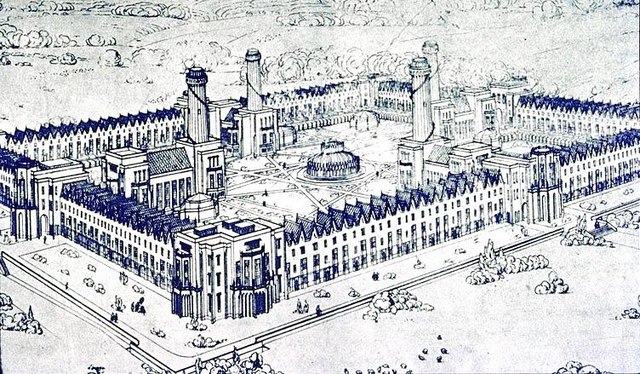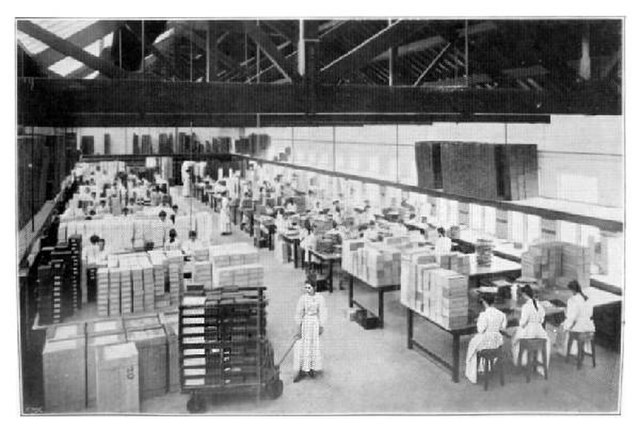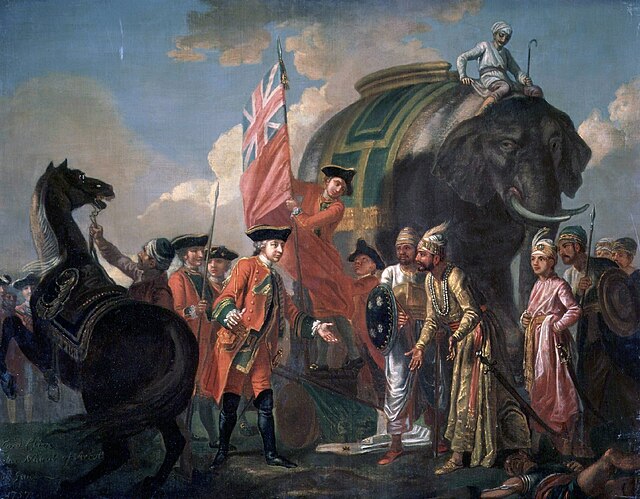Welfare capitalism is capitalism that includes social welfare policies and/or the practice of businesses providing welfare services to their employees. Welfare capitalism in this second sense, or industrial paternalism, was centered on industries that employed skilled labor and peaked in the mid-20th century.
Robert Owen was a utopian socialist of the early 19th century, who introduced one of the first private systems of philanthropic welfare for his workers at the cotton mills of New Lanark. He embarked on a scheme in New Harmony, Indiana to create a model cooperative, called the New Moral World, (pictured). Owenites fired bricks to build it, but construction never took place.
The Cadbury factory at Bournville, c. 1903, where workers worked in conditions that were very good for the time
An example of the workers' housing at Port Sunlight, built by the Lever Brothers in 1888
The Seaside Institute, designed by Warren R. Briggs in 1887 for the benefit of the female employees of the Warner Brothers Corset Company
Capitalism is an economic system based on the private ownership of the means of production and their operation for profit. Central characteristics of capitalism include capital accumulation, competitive markets, price systems, private property, property rights recognition, voluntary exchange, and wage labor. In a market economy, decision-making and investments are determined by owners of wealth, property, or ability to maneuver capital or production ability in capital and financial markets—whereas prices and the distribution of goods and services are mainly determined by competition in goods and services markets.
Cosimo de' Medici (pictured in a 16th century portrait by Pontormo) built an international financial empire and was one of the first Medici bankers.
Augsburg, the centre of early capitalism
A painting of a French seaport from 1638 at the height of mercantilism
Robert Clive with the Nawabs of Bengal after the Battle of Plassey which began the British rule in India








